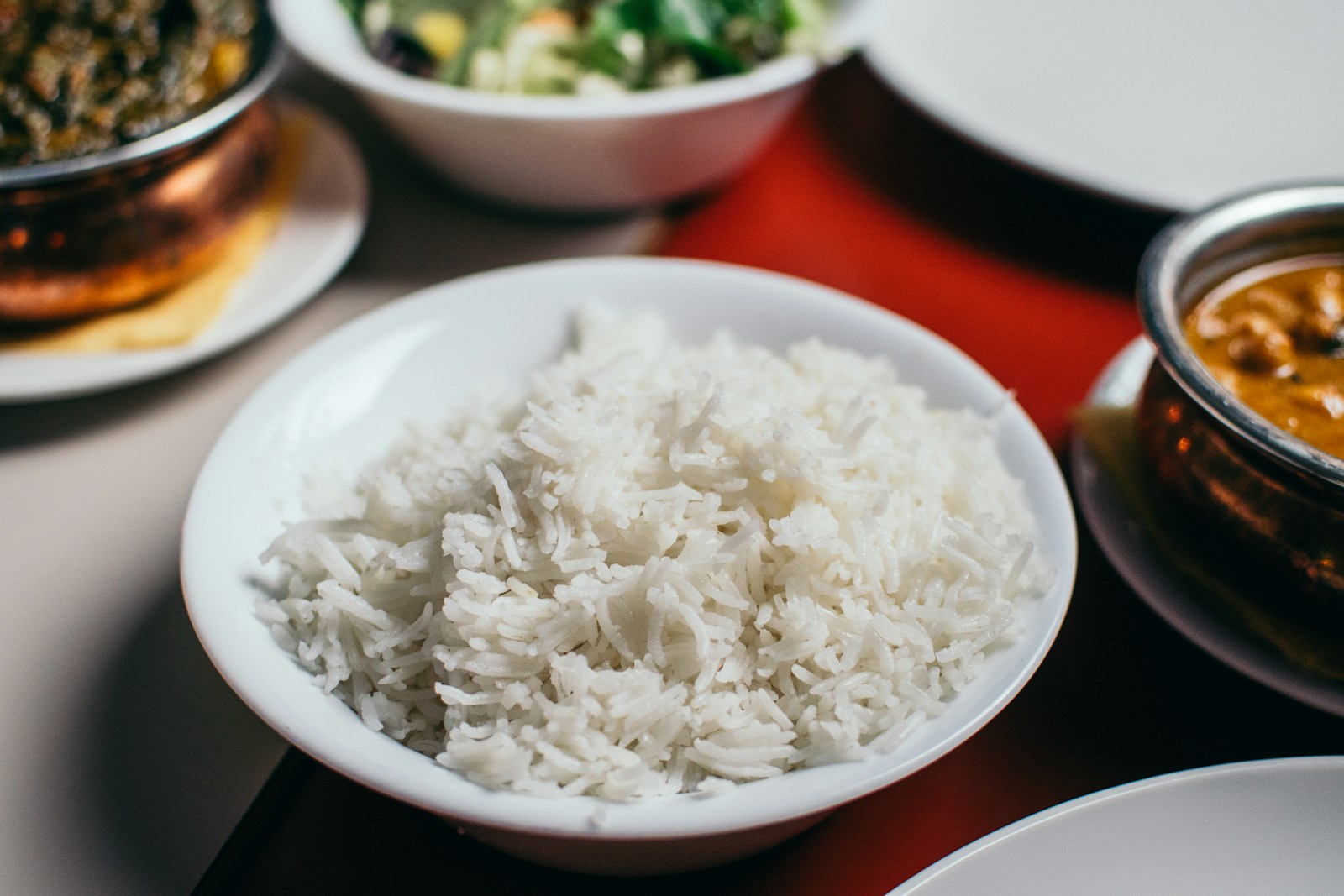Rice is a staple food in many cultures and is often prepared in large batches for convenience. However, there are concerns surrounding the safety of reheating rice, especially multiple times. Food safety experts have warned about the risks associated with improperly storing and reheating rice, which can lead to food poisoning. This article dives into the science behind these warnings, best practices for storing and reheating rice, and whether it’s safe to reheat rice multiple times. The crux of the matter lies in understanding the risk factors, implementing proper storage techniques, and making informed decisions. Let’s delve deeper into the world of rice, discussing everything from the science behind bacterial growth to practical ways of enjoying leftover rice without compromising safety.
Understanding the Risks: Bacillus Cereus and Rice
The primary concern with reheating rice is a type of bacteria called Bacillus cereus. This bacterium is commonly found in soil and can contaminate rice before it’s even cooked. While cooking kills the bacteria, it doesn’t necessarily destroy the spores that Bacillus cereus produces. These spores are resilient and can survive the cooking process, remaining in the rice.
The Science Behind Bacillus Cereus
When cooked rice is left at room temperature for an extended period, these spores can multiply and produce toxins that are heat-resistant. Even if you reheat the rice, the toxins may still be present, leading to food poisoning. Symptoms of Bacillus cereus food poisoning include nausea, vomiting, and diarrhea, typically occurring within a few hours of consumption.
Consider the case of a family gathering where leftover rice was stored on the counter for several hours before being refrigerated. When reheated the next day, several family members fell ill, with symptoms pointing towards Bacillus cereus contamination. The lesson learned here is the importance of prompt storage.
The safety of reheating rice multiple times depends largely on how the rice is stored and handled. Reheating rice in itself is not inherently dangerous, but the way it is stored between reheatings plays a crucial role in preventing the growth of harmful bacteria.
Key Factors Influencing Safety
- Time and Temperature: Bacteria thrive between 40°F (4°C) and 140°F (60°C). Limiting the time rice spends in this “danger zone” is critical.
- Storage Practices: Properly sealing and refrigerating rice minimizes exposure to bacteria.
- Reheating Method: Consistent, even reheating to a safe internal temperature is essential.
The Guidelines for Safe Rice Storage and Reheating
Cool the Rice Quickly
After cooking, rice should be cooled as quickly as possible to minimize the time it spends in the “danger zone.” Ideally, cooked rice should be cooled within one hour. Spread the rice out on a baking sheet or use a fan to expedite the cooling process.
Store Rice in the Refrigerator
Once the rice has cooled, store it in an airtight container in the refrigerator at or below 40°F (4°C). Rice should be refrigerated within one hour of cooking. Avoid placing warm rice directly into the fridge as it can raise the temperature inside, risking other foods.
Reheat Thoroughly
When reheating rice, ensure it is steaming hot all the way through. The internal temperature should reach at least 165°F (74°C). Stirring the rice while reheating can help distribute the heat evenly. Consider using a microwave with a rotating plate or a steamer to achieve even heating.
Limit Reheating to Once or Twice
Although it may be safe to reheat rice more than once if proper storage guidelines are followed, the more times rice is reheated, the higher the risk of bacterial contamination. Each time rice is cooled and reheated, the potential for bacterial growth increases.
Consume Reheated Rice Promptly
Once reheated, rice should be consumed immediately and should not be left at room temperature for more than two hours. Remember, the clock starts ticking once the rice is reheated, so plan meals accordingly.
Discard Rice After 24 Hours
If rice has been stored in the fridge for longer than 24 hours, it is best to discard it, even if it looks and smells fine. The longer rice sits in the refrigerator, the greater the risk of bacterial growth.
Potential Risks of Reheating Rice Multiple Times
While it is technically possible to reheat rice multiple times if all safety precautions are followed, there are still risks involved:
Cumulative Bacterial Growth
Each time rice is cooled and reheated, there is a window of opportunity for bacteria to grow. Even if the rice is reheated thoroughly, bacterial spores and toxins can still pose a risk. It’s similar to playing with fire—each time you reheat, you’re gambling with potential contamination.
Texture and Quality Degradation
Repeated reheating can also negatively affect the texture and taste of rice. Rice may become dry, tough, or overly soft when reheated multiple times, making it less appetizing and potentially less nutritious. For instance, jasmine rice, known for its fragrant aroma and delicate texture, might lose its appeal after repeated reheats.
Increased Risk of Food Poisoning
The more times rice is reheated, the greater the chances of contamination, especially if the rice is not cooled and stored correctly between reheatings. This risk is compounded in environments where temperature control is less stringent, such as outdoor events or busy kitchens.
Practical Tips for Handling Leftover Rice
To minimize the risks and make the most of your rice leftovers, consider these tips:
Cook Only What You Need
The simplest way to avoid the risks associated with reheating rice multiple times is to cook only the amount you plan to eat. Use a rice cooker with a measurement guide to help portion control.
Freeze Leftovers for Later Use
If you have a large batch of rice, portion it out and freeze the extra. Freezing halts bacterial growth, and rice can be safely reheated after thawing. Simply thaw in the fridge overnight and reheat thoroughly before serving.
Use Freshly Reheated Rice
Instead of reheating rice multiple times, consider incorporating leftover rice into other dishes like fried rice, casseroles, or soups, where it only needs to be reheated once. For example, a quick chicken and rice stir-fry can transform leftover rice into a flavorful meal.
Check for Signs of Spoilage
Even if rice has been stored correctly, always check for signs of spoilage, such as an off smell, unusual texture, or mold. When in doubt, it’s best to throw it out. Trust your senses—if it smells funky, it’s not worth the risk.
Additional Considerations for Rice Safety
Different Types of Rice and Their Properties
Various types of rice, such as basmati, jasmine, and brown rice, have different moisture contents and textures, which might affect how they reheat. Brown rice, for example, retains more moisture and might fare better in terms of texture after reheating. Experiment with different types to see which holds up best to reheating.
Cultural Practices and Rice Consumption
In some cultures, rice is a part of every meal, and understanding traditional practices can offer insights into safer handling methods. In Japanese cuisine, for instance, leftover rice is often used for onigiri (rice balls) and consumed cold, showcasing different ways to enjoy rice without reheating.
Expert Opinions and Research
Studies on Bacterial Growth in Rice
Research has shown that rapid cooling and appropriate storage are key to reducing bacterial growth in rice. Studies emphasize the significance of maintaining low temperatures and reheating to recommended temperatures to ensure safety.
Food Safety Experts’ Recommendations
Food safety authorities, including the USDA and FDA, provide guidelines similar to those discussed here. They stress the importance of quick cooling, proper storage, and cautious reheating to prevent foodborne illnesses.
Conclusion: Making Informed Choices
While it is possible to reheat rice multiple times if proper food safety practices are followed, it’s generally safer to limit reheating to once or twice. The risks associated with Bacillus cereus bacteria increase each time rice is cooled, stored, and reheated. To reduce the risk of foodborne illness, it’s crucial to cool, store, and reheat rice correctly.
By following food safety guidelines, you can enjoy your rice leftovers safely and with peace of mind. Ultimately, while reheating rice multiple times can be done, it’s not recommended from both a safety and quality perspective. For best results, prepare only what you need or freeze extra portions to avoid the need for repeated reheating.
In embracing these practices, you not only safeguard your health but also enhance your culinary experience, making every meal both enjoyable and safe.




